Measurement of headphone frequency history
Let's move on to measuring the quality of the headphones. I have again normalized the frequency curve at 1 KHz to 0 dB, so that on the one hand one can evaluate the overall course with all encores and frequency waste and on the other hand not completely loses the possibility of comparison to previous measurements. But it is still different, because the smoothing (1/1 octave) is supplemented by the almost unsmoothed representation (1/24 octave). All of this looks clearly "more hibbeliger", of course, but also fits much better with reality. Because one thing is also clear: it does not exist, the ideal curve.
Here I have to come back to the upholstery, because it is more on-ears than over ears for me. The measured frequency curve depends extremely on how the headphones are seated. If the contact pressure is too low or too high, the curve shifts very clearly. I would even take a critical view of this, because when you listen (at least initially) you always somehow try to get the parts right. Especially the bass area is more limited when the seat is wrong than you can see on the curve.
Even in the tweeter, Peak is in arrears if you press the mussels too hard. However, this happens faster than you think, because the very uncontoured and soft upholstery has an acoustic side hold like the seats in an old Renault. Our curve here is the ideal case when the headphones are properly seated on a not too big head. But then I prefer to save the counter-evidence.
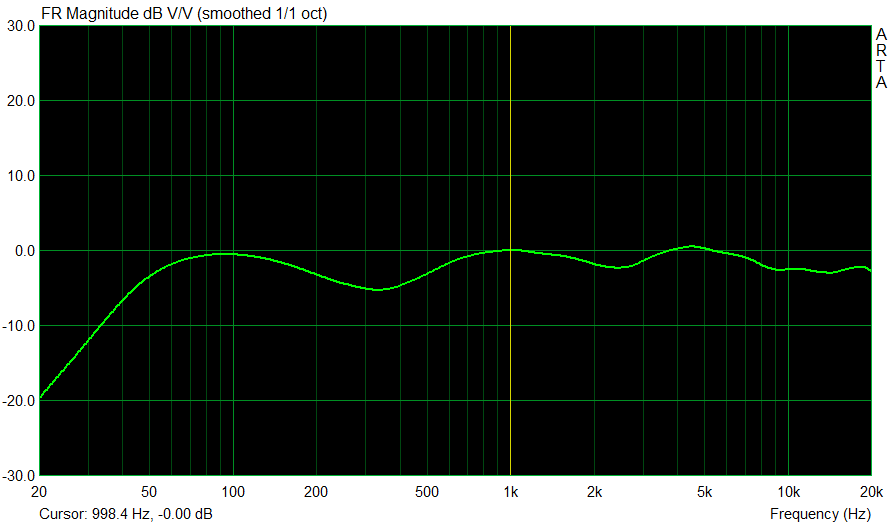
This looks no different and you can also see very nicely the usual 250 Hz delle, which is almost always a consequence of a bass correction. What you lift down stairs almost always pushes such a dent in front of you. So the lower middles are a bit handicapped, which should take some of the warmth and fullness of the headphones. The 20 Hz indication in the specs is wishful thinking, because with a level drop of 20 dB you hear (almost) nothing more. Upstairs, however, it fits.
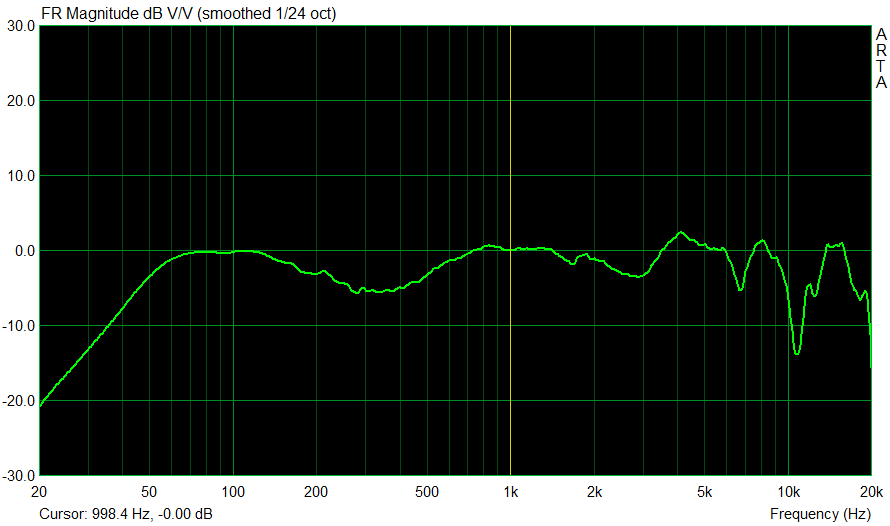
Here, of course, the "only" semi-professional measuring equipment also plays a role, but nevertheless the measured is also analogous to the smoothed course. It is quite good, but unfortunately not outstanding. 100-euro headphones can actually do that even if you don't shop completely blindly.
Cumulative Spectra (CSD and SFT)
The cumulative spectrum denotes different types of diagrams that show time-frequency properties of the signal. They are generated by successive application of the Fourier transformation and suitable windows to overlapping signal blocks. These analyses are based on the frequency response diagram already shown above, but also contain the element time and now show as a 3D graphic ("waterfall") very clearly how the frequency response develops over time after the input signal stopped. In colloquial terms, such a thing is also called "end" or "swingout".
Normally, the driver should also stop as fast as possible after the input signal has been dropped. However, some frequencies (or even entire frequency ranges) will always subside slowly and then continue to appear in this chart as longer-lasting frequencies on the timeline. This is a good way to see where the driver has glaring weaknesses, perhaps even "squealing" or where, in the worst case, resonances may occur and disturb the overall picture.
I will now test two types of cumulative spectrum:
Cumulative Spectral Decay (CSD)
Cumulative spectral decay (CSD) uses the FFT and a modified rectangular window to analyze the spectral drop of the pulse response. It is mainly used to analyze the speaker response. The CSD typically uses only a small FFT block shift (2-10 samples) to make resonances more visible throughout the frequency range, making it a useful tool for detecting the resonant of the converter.
The picture is not even bad, but you can see the high-frequency peak that I have threatened much better than the frequency curve can. It is not only the question of how high the level of a particular frequency range is, but how long this level is also after the signal has disappeared. In the super high tone, I can see the traces of the design that serves this unspeakable Hi-Res audio logo just to be compliant. Not my taste.
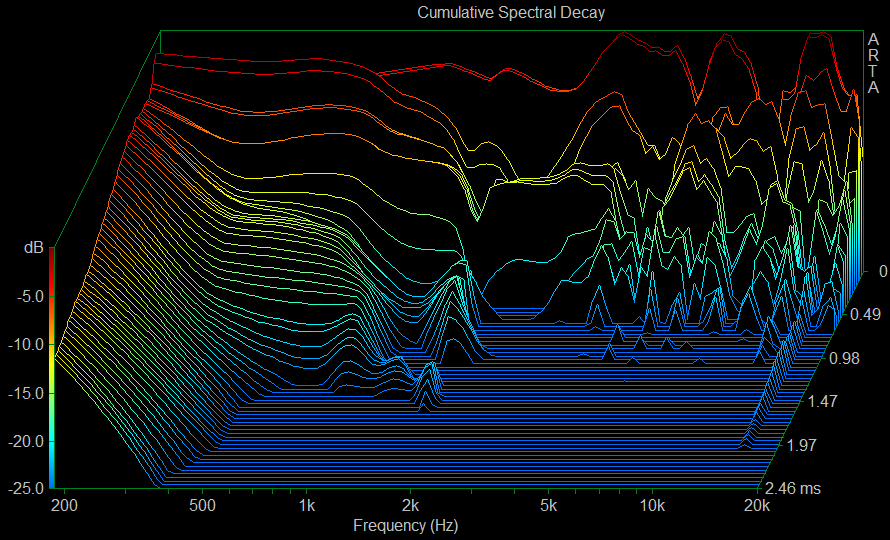
Short-time Fourier Transform (STF)
The Short-Time Fourier Transformation (STF) uses the FFT and Hanning windows to analyze the time-varying spectrum of recorded signals. In general, a larger block shift (1/4 to 1/2 of the FFT length) is used to analyze a larger part of the time-variable signal spectrum, whereby one gets closer to the fields of application such as language and music.
In the STF spectrum, we see the peaks in the high and super high tone even more clearly. This produces a very bright and crackling feeling ("crispy"), but for my taste it's all too much. If you now summarize both curves, then the intermediate conclusion remains that the commandment is not bad, but also not sensational. So I will have to listen again in a moment to assess resolution, depth graduation and level strength. Because that is difficult to measure.
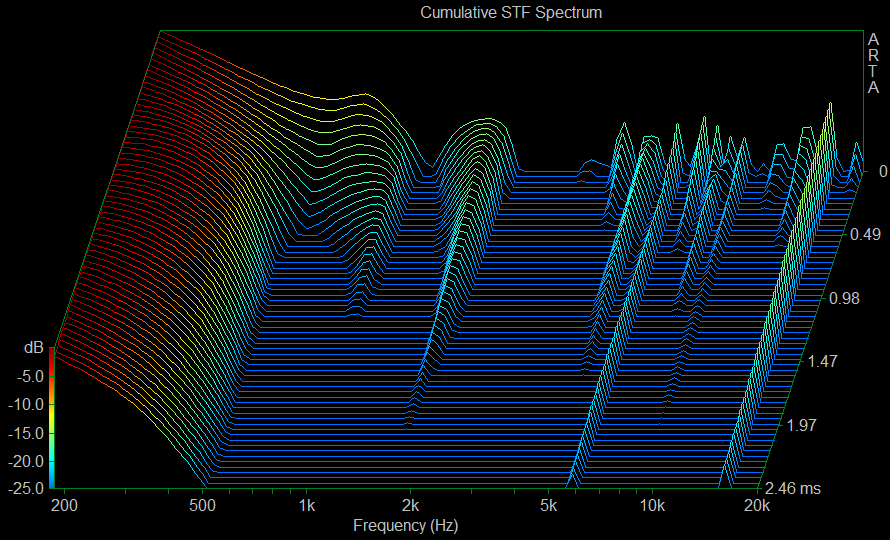
Subjective listening experience
Now let's test subjectively what you get offered in the original without the offered sounding. However, As always, I locked the headset in the measuring room for a longer time and tormented it with a selected sound loop to scrub hours of operation. What not to do for our die-hard play fanatics among readers 🙂
Bass
Test the lowest bass in the subcontraoctave (16.4 Hz to 32.7 Hz) with a recording of Bach's Toccata and Fugue in D minor (19 and 25 Hz) and the Festival Overture 1812 by Tchaikovsky (10 Hz and 12.5 Hz). The same applies to the lower ranges of the contraoctothe (32.7 to 65.4 Hz). The big bass drum (kick drum), which in the U-music is a welcome companion and usually on approx. 55 to 60 Hz, this assessment will then be rounded off.
The bass is present, but weakens below approx. 45 Hz is already clearly audible. The real low bass is extremely weak, but this is hardly noticeable in normal sources. So if you don't necessarily prefer the lowered instruments like a large organ and stand on the heralded earthquakes in movies, you can still live with them in a relaxed way. A more tuned bass guitar works just as well as the large bass drum. The impulses come very precisely and dry, but the bass stays a little too long. You can like this "follow-up", but I don't really think it's necessary.
The upper bass up to 150 Hz, in which also the Great Octave (65.4 to 130.8 Hz) is located, houses the basic language frequency of the male voice and decides very strongly on the true-to-life reproduction of male vocals.
Male vowel looks rather large-volume, but not dominant. This type of game is pleasant, because you will not be killed by it right away. Nevertheless, in return, this creates a certain coolness or even coldness, with which one has to cope mentally first. Personally, I just like it, even if it's almost analytical. The resolution here is above average good.
Frequency range
The lower middles (also basic tone range) are approx. 150 to 400 Hz. Together with the already mentioned upper bass, this area plays a very important role for the subjectively perceived heat or bass. Fullness of the sound. The basic language frequency of female voices can be found in this area.
Female vocals do not sink, but are deprived of their fullness and one has finally arrived in the cold store. The whole thing also affects all the instruments whose basic frequencies fall within this range. Gamers might even like this coolness, because it already suits wintry or post-apocalyptic scenes. But for the relaxed evening sprinkling with Diana Krall, I need a hot water bottle.
The upper mids between 400 Hz and about two KHz contain a mark at a KHz, which is still considered a reference for many measurements. Unfortunately, this is often noticeable with cheaper devices, as manufacturers often try to overemphasize this frequency. This area does not play an insignificant role in gaming either, and balanced playback contributes significantly to good spatial resolution.
All this comes cleanly and very nicely differentiated to the ear. The depth graduation is amazingly good, which surprised me again really positively. In addition, there is also the slight increase at the upper end, which is particularly suitable for the spatial image. The gamer will be happy, the musician survives it. So the bottom line is that this is a good fit.
High-pitched range
Between two and about 3.5 KHz, human hearing is most sensitive, especially since this area of the lower heights is responsible for the good overtone reproduction of the human voice. This frequency range is crucial for the recognition of a voice or instrument; in this context, one also speaks of the respective timbre.
The small dent is produced, because it balances what the ear absorbs most. The timbre hardly changes this interpretation and one is pleased about the potential of the drivers in this frequency range. If so, this area is the real piece of cream in the reproduction, where hardly any question marks remain in the room.
The middle heights (3.5 to six KHz) decide on the sound or failure of the speech reproduction as a whole, because the S- and hissing (Sibilants) fall into this range. The upper heights then reach up to approx. ten KHz to move into the super high tone.
I have already written about the peaks and the noticeable re-energising. There is hardly anything to add to this, because Sibilants, blow-out noises and in the gamer, for example, the shots are a little too dominant. Is the set-up high-pitched solution a little too researched? It remains at least in the scheme of a rather undercooled implementation, which suggests a certain consistency in the design.
Summary and conclusion
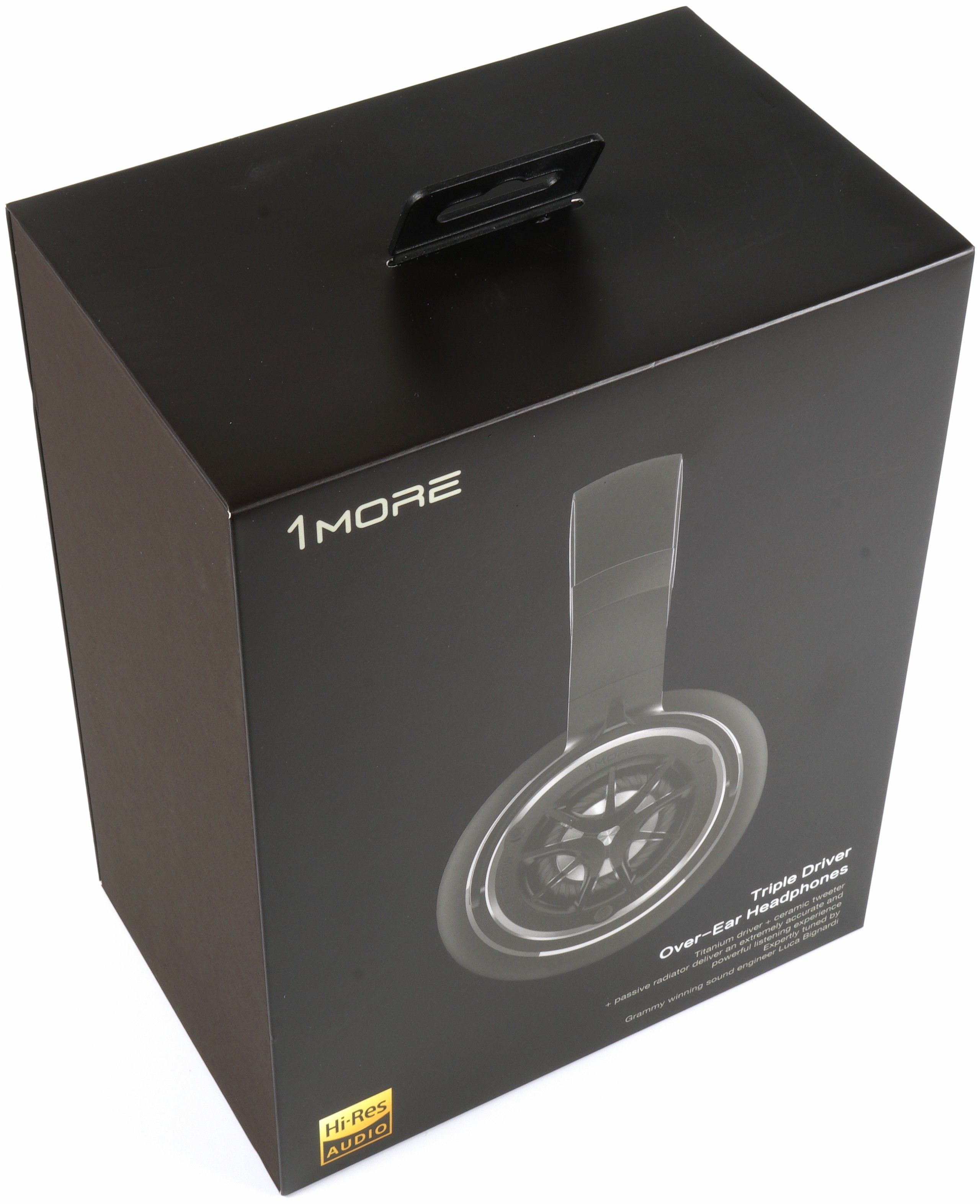 The 1More Triple Driver is not a bad headphone, but with a street price of approx. 160 Euros also no bargain. He has to compete against completely different sizes in this price range and that's where I see the problems. On the acoustic credit side I see the very good resolution and the cooler design that the customer might like, among the limitations I count the spongy, uncontoured ear pads and the peaks in the tweetor or high. Super high tone.
The 1More Triple Driver is not a bad headphone, but with a street price of approx. 160 Euros also no bargain. He has to compete against completely different sizes in this price range and that's where I see the problems. On the acoustic credit side I see the very good resolution and the cooler design that the customer might like, among the limitations I count the spongy, uncontoured ear pads and the peaks in the tweetor or high. Super high tone.
The choice of material can be quite convincing, except for the uninspired, far too soft upholstery, and the seat is still ok for medium-sized heads, even good for smaller ones. What bothered me a little is the frequency curve that is very strongly influenced by the seat, but this falls back on the padding. The level strength is sufficient, but not grandiose, the low bass exactly around the factor too weak around which one of the super high tone then goes to the mind. This is, of course, a very subjective judgment.
Honest opinion? I would immediately make a recommendation for EUR 80 to 100, but at almost EUR 160 I would have expected a little more. Not bad, but just too expensive. Because the bar hangs from 100 euros already fizzy high. And that's exactly what some areas aren't even torn, but you just jump through below. My tip: price down, then thumbs up!
1MORE Triple Driver Over Ear H1707 silber
 | Zentrallager: verfügbar, Lieferung 3-5 WerktageFiliale Wilhelmshaven: nicht lagerndStand: 02.05.24 19:58 | 104,15 €*Stand: 02.05.24 19:59 |
 | Ab Lager lieferbar - Lieferzeit 2-4 Werktage | 104,16 €*Stand: 02.05.24 15:33 |
 | Auf Lager, Lieferzeit 1-2 Werktage | 107,64 €*Stand: 02.05.24 13:12 |














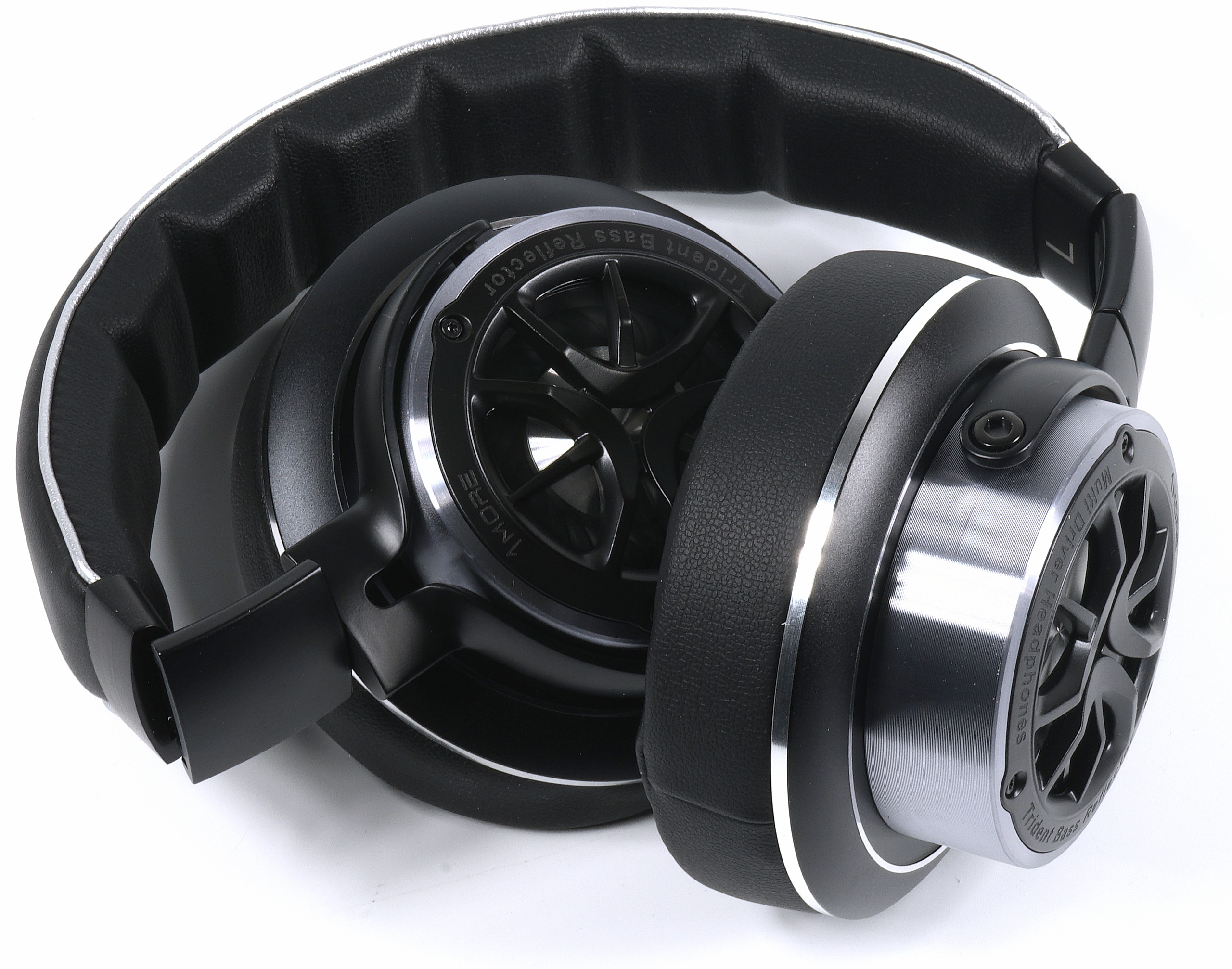

















Kommentieren